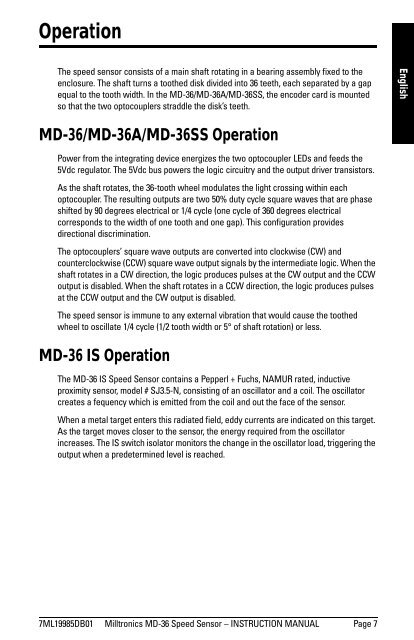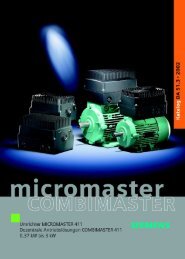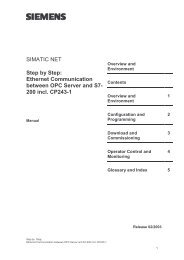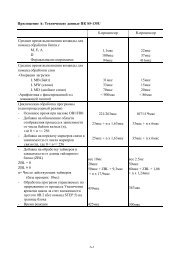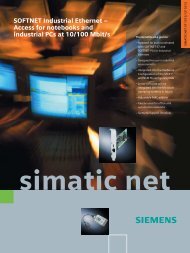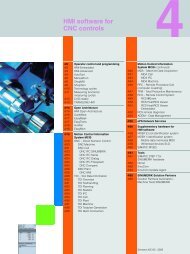Milltronics MD-36 Speed Sensor - Siemens
Milltronics MD-36 Speed Sensor - Siemens
Milltronics MD-36 Speed Sensor - Siemens
You also want an ePaper? Increase the reach of your titles
YUMPU automatically turns print PDFs into web optimized ePapers that Google loves.
Operation<br />
The speed sensor consists of a main shaft rotating in a bearing assembly fixed to the<br />
enclosure. The shaft turns a toothed disk divided into <strong>36</strong> teeth, each separated by a gap<br />
equal to the tooth width. In the <strong>MD</strong>-<strong>36</strong>/<strong>MD</strong>-<strong>36</strong>A/<strong>MD</strong>-<strong>36</strong>SS, the encoder card is mounted<br />
so that the two optocouplers straddle the disk’s teeth.<br />
<strong>MD</strong>-<strong>36</strong>/<strong>MD</strong>-<strong>36</strong>A/<strong>MD</strong>-<strong>36</strong>SS Operation<br />
Power from the integrating device energizes the two optocoupler LEDs and feeds the<br />
5Vdc regulator. The 5Vdc bus powers the logic circuitry and the output driver transistors.<br />
As the shaft rotates, the <strong>36</strong>-tooth wheel modulates the light crossing within each<br />
optocoupler. The resulting outputs are two 50% duty cycle square waves that are phase<br />
shifted by 90 degrees electrical or 1/4 cycle (one cycle of <strong>36</strong>0 degrees electrical<br />
corresponds to the width of one tooth and one gap). This configuration provides<br />
directional discrimination.<br />
The optocouplers’ square wave outputs are converted into clockwise (CW) and<br />
counterclockwise (CCW) square wave output signals by the intermediate logic. When the<br />
shaft rotates in a CW direction, the logic produces pulses at the CW output and the CCW<br />
output is disabled. When the shaft rotates in a CCW direction, the logic produces pulses<br />
at the CCW output and the CW output is disabled.<br />
The speed sensor is immune to any external vibration that would cause the toothed<br />
wheel to oscillate 1/4 cycle (1/2 tooth width or 5° of shaft rotation) or less.<br />
<strong>MD</strong>-<strong>36</strong> IS Operation<br />
The <strong>MD</strong>-<strong>36</strong> IS <strong>Speed</strong> <strong>Sensor</strong> contains a Pepperl + Fuchs, NAMUR rated, inductive<br />
proximity sensor, model # SJ3.5-N, consisting of an oscillator and a coil. The oscillator<br />
creates a fequency which is emitted from the coil and out the face of the sensor.<br />
When a metal target enters this radiated field, eddy currents are indicated on this target.<br />
As the target moves closer to the sensor, the energy required from the oscillator<br />
increases. The IS switch isolator monitors the change in the oscillator load, triggering the<br />
output when a predetermined level is reached.<br />
7ML19985DB01 <strong>Milltronics</strong> <strong>MD</strong>-<strong>36</strong> <strong>Speed</strong> <strong>Sensor</strong> – INSTRUCTION MANUAL Page 7<br />
English


